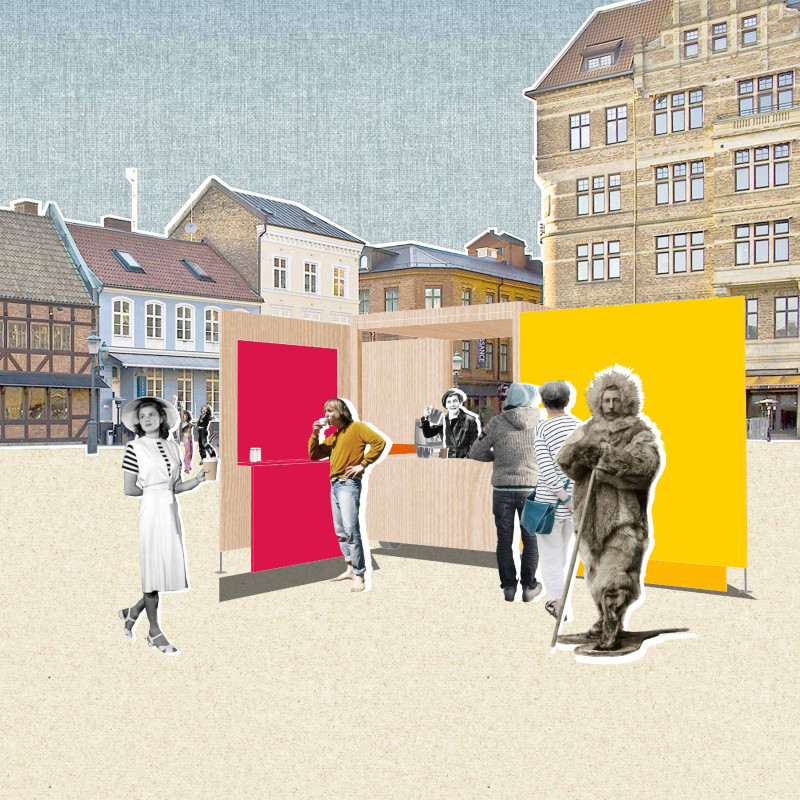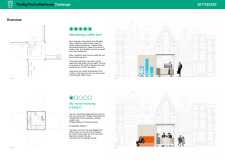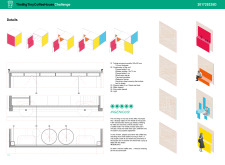5 key facts about this project
The Biggest Tiny Coffee House is a mobile coffee kiosk designed to fit into various urban locations. The aim is to change underused areas into inviting outdoor cafés. The design focuses on flexibility and adaptability, ensuring the kiosk meets the needs of different settings and encourages social interaction among patrons. Overall, it serves as a compact structure that enhances community engagement while providing a space for coffee service.
Modular Design
The design features a modular system that can change according to the number of customers and the available space. In its simplest form, one wall unfolds to extend the serving counter, allowing the kiosk to comfortably occupy a parking space. This efficient use of space is ideal in crowded urban areas, making coffee easily accessible. For larger crowds, additional walls can open up, creating cozy areas around a central service point, which enhances the gathering experience.
Social Interaction
During operating hours, the kiosk becomes a hub for socializing, filled with the smell of coffee and the buzz of conversation. It attracts passersby and encourages people to stop, grab a drink, and connect with others. When not in use, the kiosk still adds visual interest to the urban landscape, hinting at a lively café atmosphere. Its design plays a crucial role in creating a welcoming environment that invites community interaction.
Material Specifications
Specific technical details are essential for ensuring the stability and usability of the kiosk. It uses a tubular aluminium profile that measures 100 x 100 mm and is 3.8 mm thick, providing a strong yet light frame. The roof is made from a 2 cm thick plywood plate supported by wooden profiles of 1.8 x 7.5 cm, enhancing the overall strength while offering good insulation and weather protection.
Additional features include a glued vapor barrier, thermal insulation, and a waterproof barrier that help maintain the kiosk's functionality in various weather. The outer layer consists of an aluminium sheet that covers the edges, carefully bent to shape for durability and aesthetic appeal.
The design includes various seating configurations, from quick standing counters to more relaxed areas for conversation. Each setup invites customers to engage with their surroundings, making the experience enjoyable and encouraging connections with both the coffee and the community.





















































